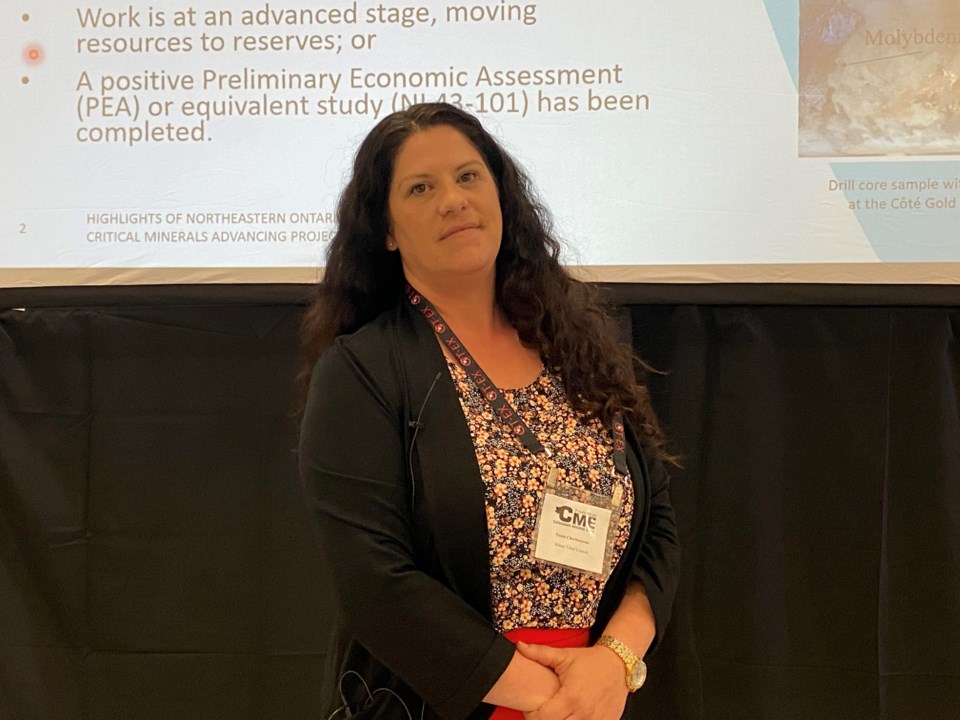Mining companies are being called on to do more.
“Do the right thing because you want to, not because you have to,” said Nicole Charbonneau, a mining development advisor from the Wabun Tribal Council.
She presented the Wabun model of working with mining companies and First Nations at the opening day of the Canada Mining Expo today (June 7).
“The Wabun model is an interest-based approach versus a rights-based approach,” she explained to the roughly 150 people gathered in the McIntyre Community Centre ballroom. “The best way I can put that is that it’s ‘You scratch my back, I’ll scratch yours.’”
The Wabun Tribal Council has outlined the steps needed to be taken by companies looking to explore and mine on member communities’ traditional land, and the necessary agreements that need to be signed to work with the communities.
“It’s clear that our communities have been affected for over 100 years,” said Charbonneau. “Our communities are very familiar with mining and many members work directly or indirectly with the mining industry.”
Charbonneau said that support for the communities and their ability to profit from development on their lands is a large part of the relationship companies should be building with First Nations.
“If you want to build more mines faster, support the renewal of Wabun’s resource revenue sharing agreement with the province,” said Charbonneau. “It further promotes our member nations’ meaningful participation in the mining industry and work toward reconciliation.”
Wabun Tribal Council represents six Treaty 9 First Nations in Northern Ontario — Beaverhouse First Nation, Brunswick House First Nation, Chapleau Ojibwe First Nation, Flying Post First Nation, Matachewan First Nation and Mattagami First Nation.
She highlighted the need to be honest, transparent and open in negotiations with the communities.
“If you’re coming to the table with ill intentions or you’re not being transparent, we pick up on that very quickly and it’s probably not going to go very well,” she said.
Wabun's engagement with the mining industry includes education and employment requirements so that the communities affected by the mining development benefit from increased employment as well as revenue sharing.
“It’s all based on building those mutually beneficial relationships, so when you’re negotiating and implementing these agreements, please reach out early, often, in writing and don’t rush,” said Charbonneau.
Cultural and environmental consultation is key, not only to current projects but for the future of the communities and the industry.
“We are working toward reconciliation and a sustainable future for our youth and the next seven generations,” said Charbonneau.
The Canadian Mining Expo is set up at the McIntyre Community Building until June 8.



